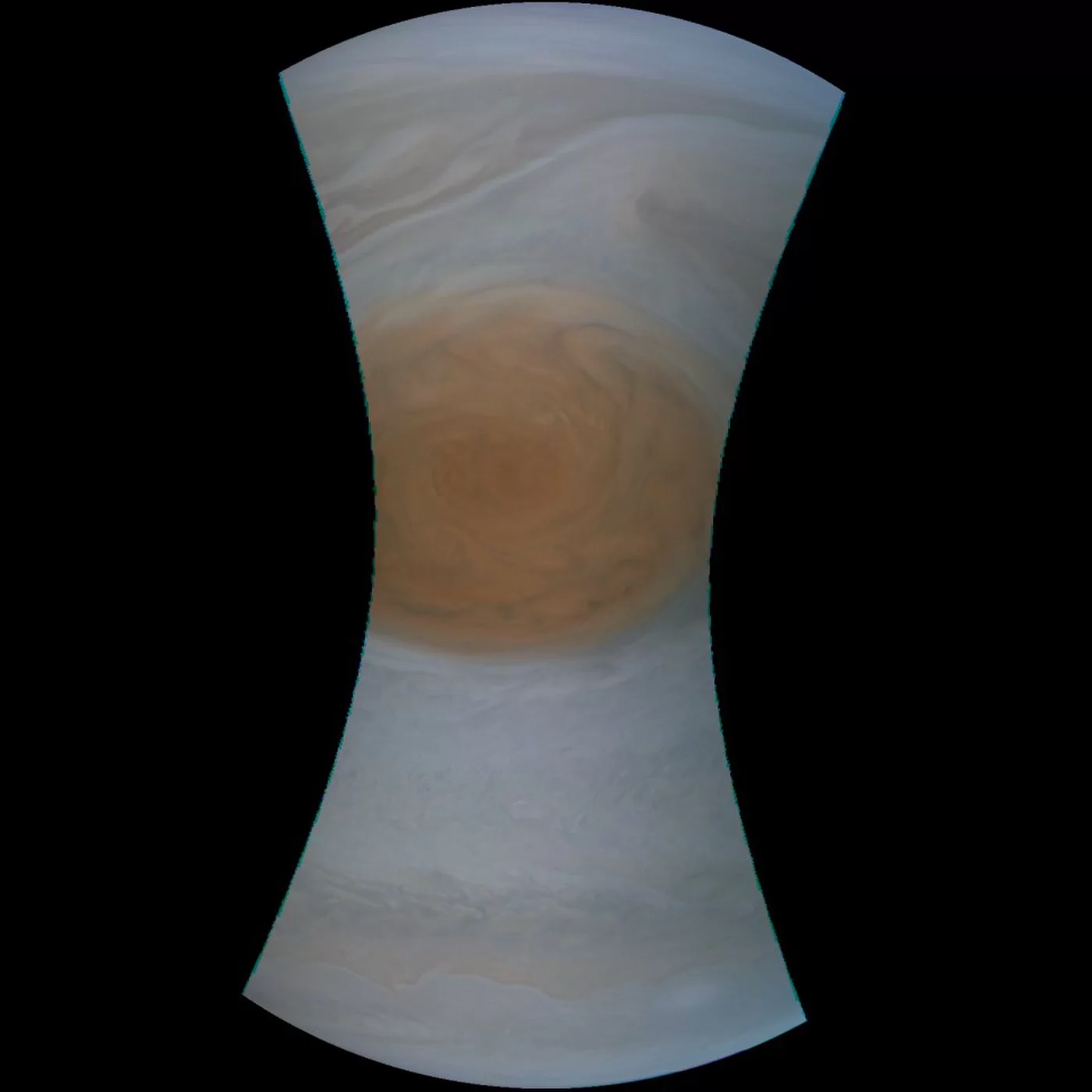
You can now feast your eyes on the first up-close photos of Jupiter's famous Great Red Spot ever taken.
On Monday night (July 10), NASA's Juno spacecraft zoomed just 5,600 miles (9,000 kilometers) above the mammoth storm's cloud tops — closer than any probe had gotten before.
"For generations, people from all over the world and all walks of life have marveled over the Great Red Spot," Juno principal investigator Scott Bolton, from the Southwest Research Institute in San Antonio, said in a statement before the flyby. "Now we are finally going to see what this storm looks like up close and personal."
The images that the probe's JunoCam instrument snapped during the close encounter have come down to Earth, NASA announced today (July 12), and the agency is urging anyone who's interested to have a go at processing the photos. You can do so on the mission's JunoCam page.
The Great Red Spot has been swirling for centuries; astronomers have been monitoring it since 1830, NASA officials said. The storm is about 10,000 miles (16,000 km) wide, making it considerably bigger than the entire Earth. (Earth's diameter is about 7,900 miles, or 12,700 km).
But the Great Red Spot used to be even bigger; the storm has been shrinking for decades, though the rate at which this is occurring has slowed recently.
Juno launched in August 2011 on a $1.1 billion mission to investigate Jupiter's composition, interior structure, formation and evolutionary history. The probe reached Jupiter on July 4 of last year, settling into a highly elliptical orbit that takes 53.5 Earth days to complete.
Get the world’s most fascinating discoveries delivered straight to your inbox.
Juno collects most of its data during its closest passes by the solar system's largest planet. The Great Red Spot photos were taken during the latest such encounter — the sixth science flyby Juno has performed. (The spacecraft has actually performed seven close flybys, if you count the one that occurred during its orbital arrival, when Juno's science instruments were off.)
Juno's mission is scheduled to run through at least February 2018.
Follow Mike Wall on Twitter @michaeldwall and Google+. Follow us @Spacedotcom, Facebook or Google+. Originally published on Space.com.






